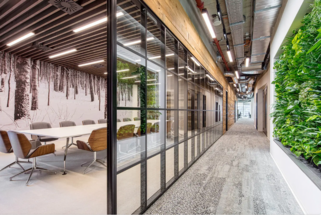1. Economy: Triple increase in GDP
Colliers predicts favorable economic dynamics for the CEE region, expressed by a significant increase in the GDP growth rate in the Central and Eastern Europe region to around 2.5% in 2024, which is almost three times last year's figures. This positive trend is supported by an improving external situation, falling inflation and interest rates, and a strong inflow of capital for investment.
2. Geopolitics: Equilibrium in a Time of Change
Russia's invasion of Ukraine and changes in relations between China and Western countries are causing concern. However, due to the geographical location of Central and Eastern Europe, this region is gaining importance, which can bring long-term benefits. Elections are also important for the geopolitical balance, not only in the CEE region, but also in major economies such as the US, India and the UK.
3. Capital flows: Attractiveness for reshoring and nearshoring
The region remains attractive to Western economies due to differences in productivity and labor costs. Colliers expects the strong growth in capital spending in the region to continue, providing a favorable medium-term outlook.
4. Retail Sales: Expansion and Growth
Declining inflation and a favorable economic outlook are sure to be important factors for developers and retail investors. Developers and investors are trying to get an overview of areas or cities in CEE countries that can still accommodate new projects. Retail parks remain a key segment for the growth of the commercial real estate market in Central and Eastern Europe.
5. Investment: The fabled reduction in interest rates
Colliers does not expect a reduction in interest rates in the coming years. With property prices falling over the past year and a half, many investors are waiting for even better buying opportunities. The seller, on the other hand, tries to keep his assets. However, lower interest rates in the Eurozone and the US could lead to activity in the second half of the year.
6. Offices: Lower construction and market recovery
New office deliveries are expected to slow sharply in 2024, which could help absorb vacancies and bring a market recovery. For now, it is still a largely tenant-driven market, as vacancy rates remain in the double digits in CEE-6 capital cities with the exception of Prague. Modern offices meeting ESG standards will be key.
7. Industrial real estate: Stabilization of rent
Experts expect rents to stabilize or slow to grow in industrial properties as construction costs gradually normalize and vacancy rates rise.
8. ESG: Environmentality as a key factor
Building quality is increasingly important to tenants, landlords and investors. The gap between outdated and efficient buildings is widening, whether in terms of rents, attractiveness to tenants or occupancy rates. However, retrofits of older buildings and ESG changes come at a time of high interest rates.
9. The rise of artificial intelligence: Practical use of technology
We are entering the phase of practical use of artificial intelligence. Innovations like multimodal AI, which could significantly increase productivity, are becoming a reality. At the same time, smart office solutions are maturing that improve the relationship between tenant and landlord. All this should support the hybrid mode of work and its influence on the office market - not only in Central and Eastern Europe, but all over the world.
10. Housing: Diverse Challenges and Stories
Residential real estate is probably the most diverse segment in the CEE region, with the affordability of new apartments ranging from relatively decent in cities such as Bucharest and Sofia to a price bubble in Prague and Bratislava. Despite the reduction in interest rates, the situation cannot be expected to improve quickly.


